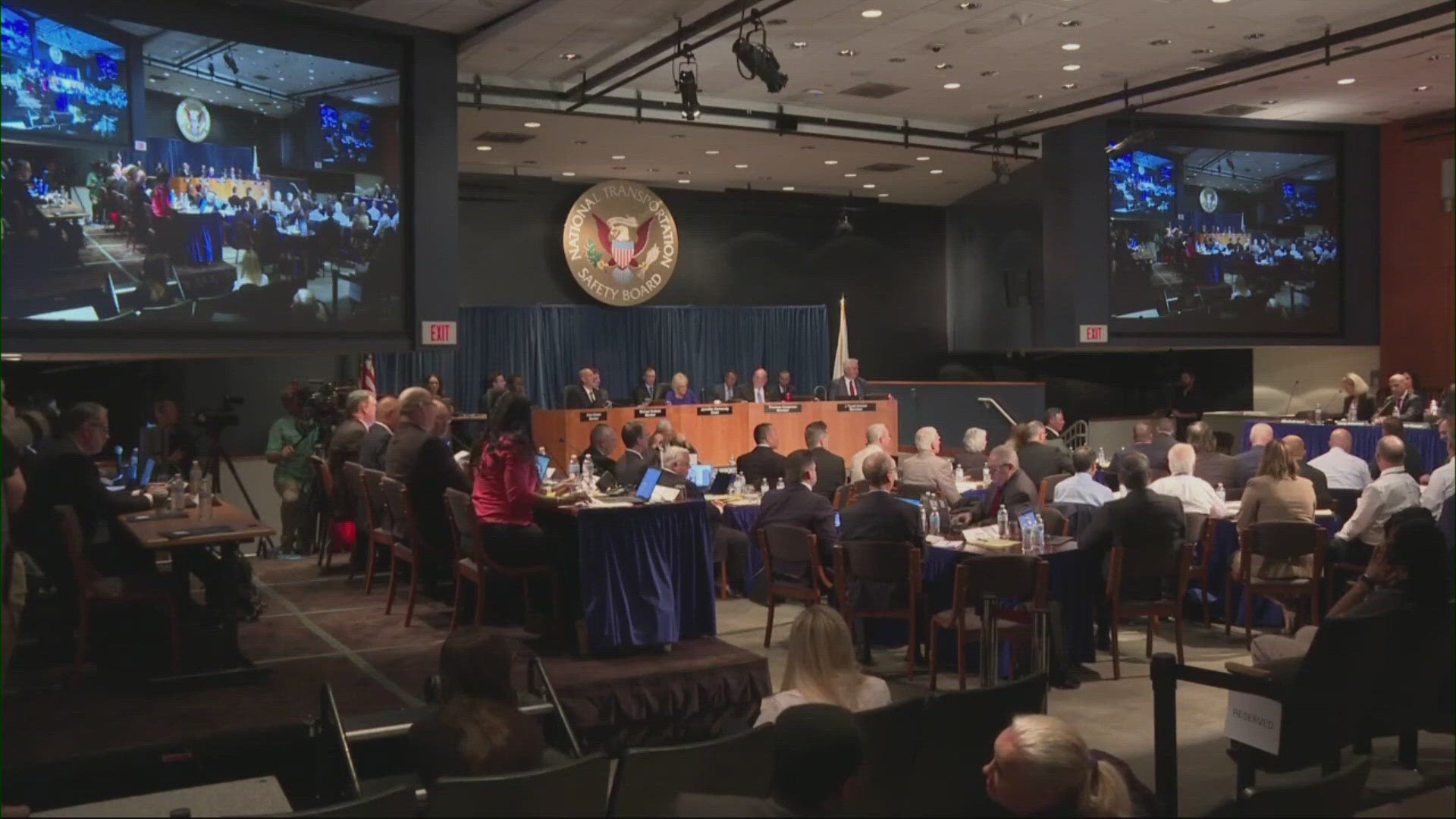PORTLAND, Ore. — The heat is on Boeing as the company takes center stage in two days of hearings surrounding the investigation into the door plug blowout on a relatively new 737 MAX 9 aircraft in January. In one of the most significant new details to come out of the first day of hearings on Tuesday, Boeing said it's redesigning its door plugs to make them more failure-proof.
The National Transportation Safety Board's investigation is still in progress, but in preliminary findings released earlier this year, the agency said the recovered door plug apparently popped off the plane in midair because it was missing four key anchoring bolts — and the oversight apparently happened while the plane was in a Boeing factory.
NTSB Chair Jennifer Homendy gaveled in the start of the hearing Tuesday, kicking off 10 hours of testimony with a lot of discussion about what happened and why, beginning with a recounting of the facts so far from NTSB investigator in charge John Lovell.
"Shortly after takeoff, the captain said that while climbing through about 16,000 feet there was a loud bang," said Lovell, explaining how the flight deck immediately knew there was a problem. The resulting near-disaster was captured on passenger cell phone videos: a gaping hole in a commercial aircraft carrying 177 people, including pilots and crew.
A company called Spirit AeroSytems builds plane fuselages that are then delivered to Boeing for assembly. Witnesses testified Tuesday that a contracted crew from Spirit travelled to Boeing's Renton, Washington, facility to fix some damaged rivets that had been discovered near the door plug while the plane was going through final assembly.
Boeing workers reportedly removed the door plug to accommodate the work, but failed to document their work. The door plug was reinstalled after the Spirit crew finished, but as the post-accident evidence shows, the anchoring bolts were left out when it was reattached.
Boeing's Senior VP of Quality, Elizabeth Lund, announced the company's planned changes to its door plug design.
"They are making changes to that plug; they are working on some design changes that will allow the door, the plug to not be closed if there's any issue, until it's firmly secure that would hold it securely in as well as simple changes to make sure things like the fasteners or lanyard are on," she said.
Lund indicated that a fix could be in place within the year for Boeing 737 MAX 9 planes, and then a retrofit could be applied across the fleet.
That was welcomed news, but Homendy indicated that some of the other information Boeing supplied at the hearing did not get to the heart of the investigation, which aims to take a broader look at Boeing's manufacturing processes to figure out how the door plug oversight could have happened.
"This isn't a PR campaign for Boeing," she said at one point. "What I want to know, what we want to know, is what happened in March, April, May, June, July, August, September (2023) leading up to this, leading up to what happened in January."
The hearing will continue on Wednesday.

